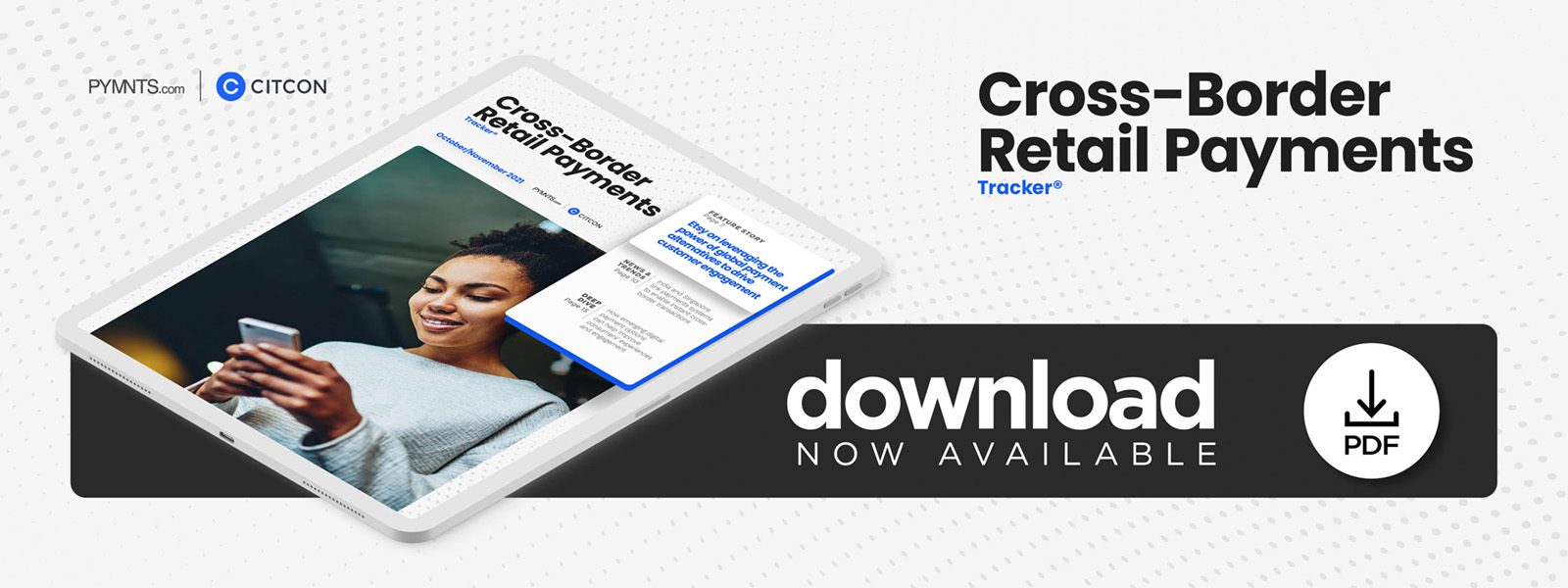Deep Dive: How Emerging Digital Payment Options Impact Cross-Border Customer Experience

As businesses are working to support an increasing volume of cross-border transactions, eCommerce growth is expected to continue long after the pandemic ends. Recent research established that more than $120 trillion in payments volume flows between trading partners annually, and $10 trillion of that volume stems from cross-border trading.
Doing business across borders comes with unique hurdles, however. Local payment frictions can be amplified when transacting internationally. PYMNTS’ analysis found that cross-border sales represent roughly 26 percent of the average total for United States and United Kingdom businesses, but receipt of payment for these transactions takes 55 percent longer than it does for domestic sales. Cross-border transactions confront a host of other issues, too, including fraud, data security, foreign currency issues and conversion costs, a lack of transparency and transaction complexities.
Consumers nevertheless are continuing to trend toward eCommerce purchases domestically as well as across borders, as evidenced by a growing body of research identifying significant spending shifts during the pandemic. As more consumers shop online, they are adopting new digital payment options for digital and in-store purchases alike. One study conducted across 18 markets found that 93 percent of respondents plan to try at least one new payment method — such as contactless, QR codes, cryptocurrencies or biometric-based transactions — within the next year. Sixty-three percent reported that they already had used a new payment method during the pandemic.
As cross-border transactions become more prevalent, eCommerce merchants are hard-pressed to enable and support emerging cashless payment options, accelerate transactions and reduce payment frictions. Transparent, secure and fast transactions help retailers build customer loyalty, reduce cart abandonment and increase sales, after all.
The following Deep Dive examines the emergence of new digital payment options and how cash-free alternatives can improve consumer experience and engagement. It also delves into how merchants can provide a variety of payment options to help reduce cross-border transaction frictions and grow sales.
What consumers expect from digital payment offerings
Many retailers had no choice but to find new ways to engage with customers to stay in business during the pandemic. More than one-fifth of global retailers have engaged with consumers over the past 19 months by either creating eCommerce sites or accepting contactless transactions, according to a recent survey of 5,500 leading merchants. This shift in payment preferences has been so pronounced that 90 percent of in-person transactions now take place at contactless payments-enabled sales terminals.
Consumers’ growing adoption of emerging digital payment options also indicates that they expect retailers to offer multiple shopping and payment options — and that they could become dissatisfied if this is not provided. Seventy-nine percent of consumers prefer to shop at stores that offer in-person and digital presences, more than half avoid patronizing retailers that do not offer electronic payment options and 68 percent are particularly interested in shopping with merchants that provide the latest payment methods.
These new digital consumers also point to a lack of preferred payment options as a key factor behind abandoning purchases at checkout. In fact, cart abandonment affects as much as 75 percent of purchases globally and can cost merchants a staggering $4 trillion annually.
Gearing up to enable all cross-border digital payment options
The continued growth in cross-border sales and digital payment alternatives suggests a steady trend toward consumers making online purchases with merchants both domestic and abroad. Eighty-nine percent of financial services firms expect consumers to continue shifting toward eCommerce purchases, and this development requires retailers in all markets to invest in the latest digital payment methods to keep pace. Ninety-seven percent of these firms believe real-time payment methods will feature more prominently in the future, with 42 percent anticipating that cross-border, cross-currency instant payments will gain steam within the next five years.
These developments suggest that digital payments adoption is altering global payments infrastructure on two distinct fronts. The payments system is evolving to enable contactless transactions via cards and digital wallets, instant payments, bill payment solutions and request-to-pay offerings. On the other hand, cryptocurrencies, buy now, pay later plans and CBDCs represent structural disruptions to the payments ecosystem that could shake up the space.
The emergence of instant, low-cost payment solutions has allowed even nonbank providers to compete with bank- and card-based offerings. The P27 initiative in the Nordic region, for example, is supported by ISO 20022 and links 27 million people across four countries and currencies into one instant payments system. Options such as these have the potential to make cross-border commerce much more seamless and satisfying for consumers.
Cross-border payments innovations are resulting in eCommerce transactions that are faster and more transparent, efficient and secure than ever. Removing cross-border payment frictions between trade partners undoubtedly benefits all parties, and tailoring the checkout experience to meet consumers’ expectations for speed and seamlessness drives engagement and increases sales. Supporting these payment solutions and their underpinning technologies and infrastructures will be a critical task for merchants in the age of cross-border eCommerce.

